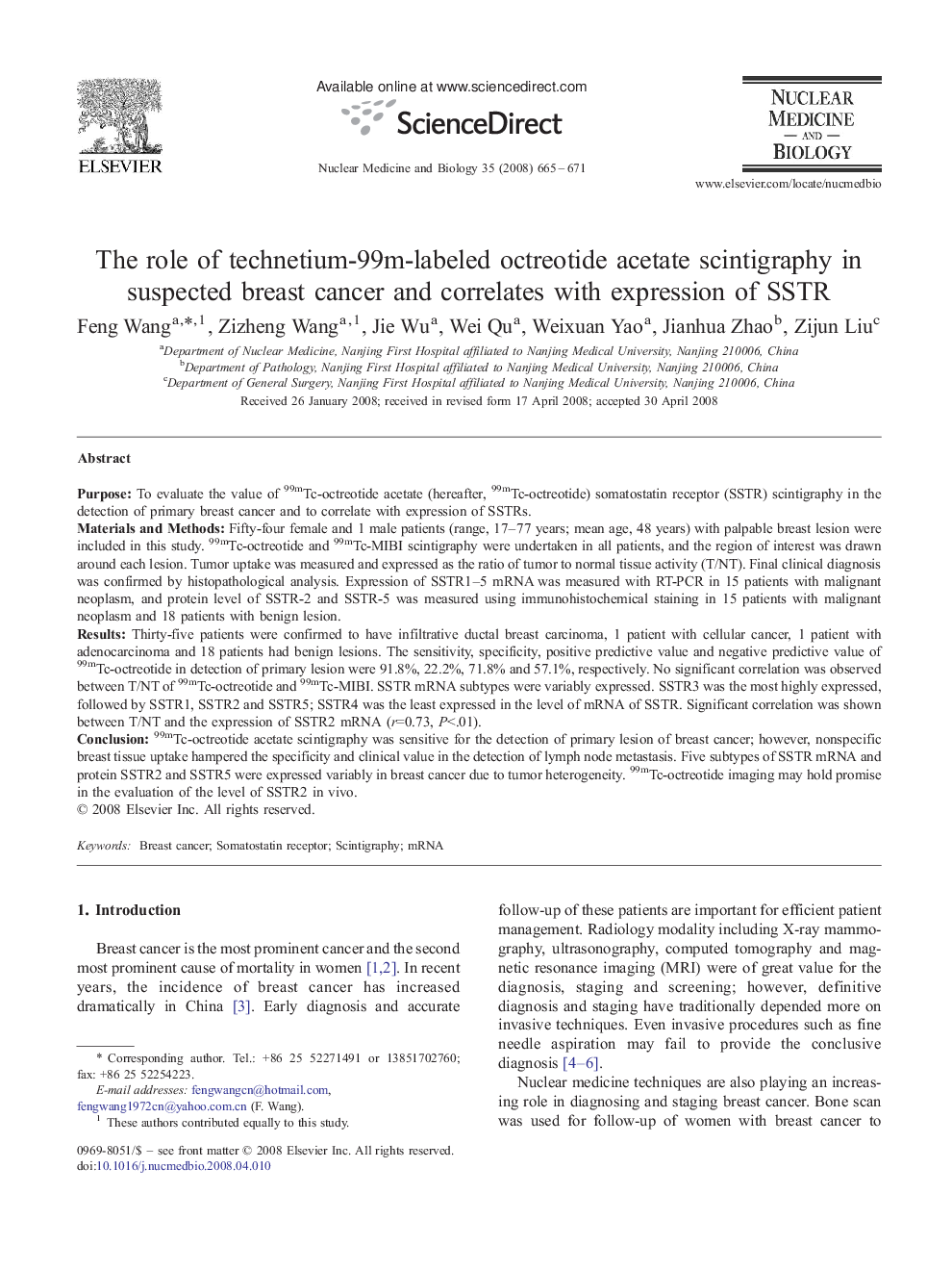| Article ID | Journal | Published Year | Pages | File Type |
|---|---|---|---|---|
| 2154903 | Nuclear Medicine and Biology | 2008 | 7 Pages |
PurposeTo evaluate the value of 99mTc-octreotide acetate (hereafter, 99mTc-octreotide) somatostatin receptor (SSTR) scintigraphy in the detection of primary breast cancer and to correlate with expression of SSTRs.Materials and MethodsFifty-four female and 1 male patients (range, 17–77 years; mean age, 48 years) with palpable breast lesion were included in this study. 99mTc-octreotide and 99mTc-MIBI scintigraphy were undertaken in all patients, and the region of interest was drawn around each lesion. Tumor uptake was measured and expressed as the ratio of tumor to normal tissue activity (T/NT). Final clinical diagnosis was confirmed by histopathological analysis. Expression of SSTR1–5 mRNA was measured with RT-PCR in 15 patients with malignant neoplasm, and protein level of SSTR-2 and SSTR-5 was measured using immunohistochemical staining in 15 patients with malignant neoplasm and 18 patients with benign lesion.ResultsThirty-five patients were confirmed to have infiltrative ductal breast carcinoma, 1 patient with cellular cancer, 1 patient with adenocarcinoma and 18 patients had benign lesions. The sensitivity, specificity, positive predictive value and negative predictive value of 99mTc-octreotide in detection of primary lesion were 91.8%, 22.2%, 71.8% and 57.1%, respectively. No significant correlation was observed between T/NT of 99mTc-octreotide and 99mTc-MIBI. SSTR mRNA subtypes were variably expressed. SSTR3 was the most highly expressed, followed by SSTR1, SSTR2 and SSTR5; SSTR4 was the least expressed in the level of mRNA of SSTR. Significant correlation was shown between T/NT and the expression of SSTR2 mRNA (r=0.73, P<.01).Conclusion99mTc-octreotide acetate scintigraphy was sensitive for the detection of primary lesion of breast cancer; however, nonspecific breast tissue uptake hampered the specificity and clinical value in the detection of lymph node metastasis. Five subtypes of SSTR mRNA and protein SSTR2 and SSTR5 were expressed variably in breast cancer due to tumor heterogeneity. 99mTc-octreotide imaging may hold promise in the evaluation of the level of SSTR2 in vivo.
